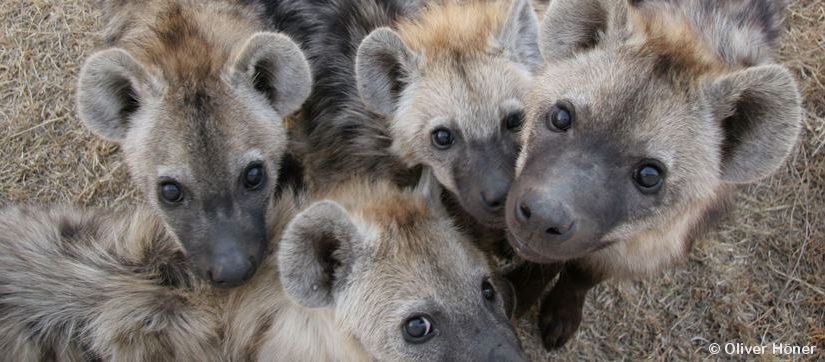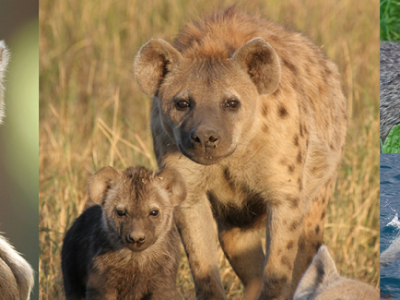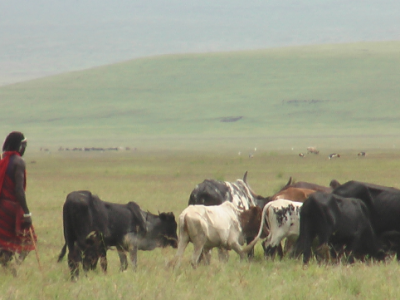A story of sex, stress and hyena poops
By Eve Davidian
In most animal societies, resources are not shared equally among members of a group. Those at the top of the social hierarchy eat the tastiest food, get the comfiest sleeping spots, and can hang out – and more if they hit it off – with the most attractive and fecund mates. In the animal world, where lifetime achievement is largely determined by the number of offspring one leaves behind, it is rather straightforward why individuals should work hard to reach the top and try to remain there for as long as they can.
What we still don’t quite understand is how social rank influences reproductive success. Do high-ranking males sire more offspring and offspring of higher quality because they are stronger and more attractive? Or is it because they are less “stressed” by competition with other males and can invest more in courting females?



To answer these questions, we did fieldwork in the African savannah. Lots of fieldwork. Over 20 years of searching, identifying, assessing paternities, and monitoring the behaviour of thousands of free-ranging spotted hyenas in the Ngorongoro Crater in Northern Tanzania. We also collected over 400 steaming hyena scats to measure the concentration of cortisol, an estimate of the physiological costs – or so-called “stress” – borne by a hyena. [To know what it takes to be a hyena poop hunter click on the poopers below.]

In our study published in the journal Functional Ecology, we demonstrate that interactions with other males are more stressful for low-ranking males than for their high-ranking rivals and that this restricts the time and energy they can invest in courting the most fecund – and most contested – females. We also found that males have to juggle romance and more mundane duties like getting acquainted with new clan mates and maintaining old friendships and strategic alliances.
But low-ranking males shy away from these stressful activities and spend more time away from other clan members, munching on bones or chilling in stinky puddles. High-ranking males, on the other hand, need less time on their own to detox and de-stress, and can invest a lot more in fostering friendly relationships with females. And that’s something hyena females are very much into!


Another very neat result was that philopatric – “stay-home, mama’s boys” – males prioritise reproduction over the fostering of social ties, and focus their reproductive efforts on high-quality females – a likely consequence of their native status and higher social rank compared to immigrants. These results very nicely match our previous work on male reproductive skew and the fitness consequences of male dispersal strategies where we found that philopatric males reproduce earlier than immigrants and sire offspring almost exclusively with top ranking females.
In contrast to many species where males use their physical strength, long horns and sharp teeth to deter rivals – or even to sexually coerce females – male spotted hyenas do not engage in violent fights to get to the top of the hierarchy and to sire offspring [males couldn’t coerce females even if they wanted to because female genitals are masculinized into a rape-proof device]. Why then are low-ranking males more stressed out than high-ranking males?


Male hyenas may not be ruthless brutes but they are no peaceful hippies either. Dominance relationships in hyena society are primarily determined by how many social allies a hyena can count on when in conflict with others. Low-ranking males usually are newcomers and lack strong alliances. They are also more vulnerable to being used as scapegoats by others and this is likely to be a major source of stress. Scapegoating is frequent among hyenas (and other animals) and likely serves as a means to release frustration and cope with stress. In hyenas, it often takes the form of a chain of dominance whereby successive males redirect aggression onto another, lower-ranking male. And when the lowest-ranking male of such a chain has no scapegoat nearby, rushing tail up at an innocent jackal, a rock, or even our research vehicle seems to do the job.
But don’t feel too sorry for low-ranking males. Their time will come. The social rank of male spotted hyenas is determined by a queuing convention. Most males eventually climb the social ladder and get to enjoy the perks of being the top dog.
Our results reveal that even in a society where dominance relationships are formalised by strict social conventions, interactions among males can incur physiological costs that are high enough to trigger behavioural adjustments with (costly) reproductive implications. Our study reshapes our understanding of how social rank correlates with ‘stress’ and how male-male competition impacts physiology, sociality and fitness. It also provides new perspectives on the potential physiological mechanism underlying the emergence of alternative reproductive and dispersal strategies.
Original publication:
Davidian E, Wachter B, Heckmann I, Dehnhard M, Hofer H, Höner OP (2020) The interplay between social rank, physiological constraints and investment in courtship in male spotted hyenas. Functional Ecology
Further information
Davidian E, Courtiol A, Wachter B, Hofer H, Höner OP (2016) Why do some males choose to breed at home when most other males disperse? Science Advances 2 e1501236.
Davidian E & Höner OP (2021) A king among queens. Frontiers EcoPics. Frontiers in Ecology and the Environment 19(10): 573.
Höner OP, Wachter B, East ML, Streich WJ, Wilhelm K, Burke T, Hofer H (2007) Female mate-choice drives the evolution of male-biased dispersal in a social mammal. Nature 448: 798-801.
Davidian E*, Benhaiem S*, Courtiol A, Hofer H, Höner OP, Dehnhard M (2015) Determining hormone metabolite concentrations when enzyme immunoassay accuracy varies over time. Methods in Ecology and Evolution 6(5):576-583. *contributed equally






